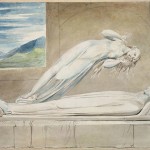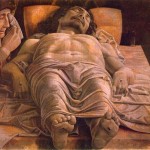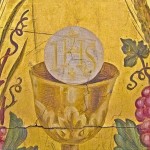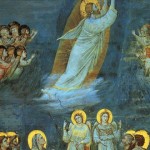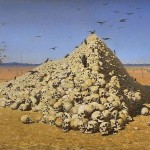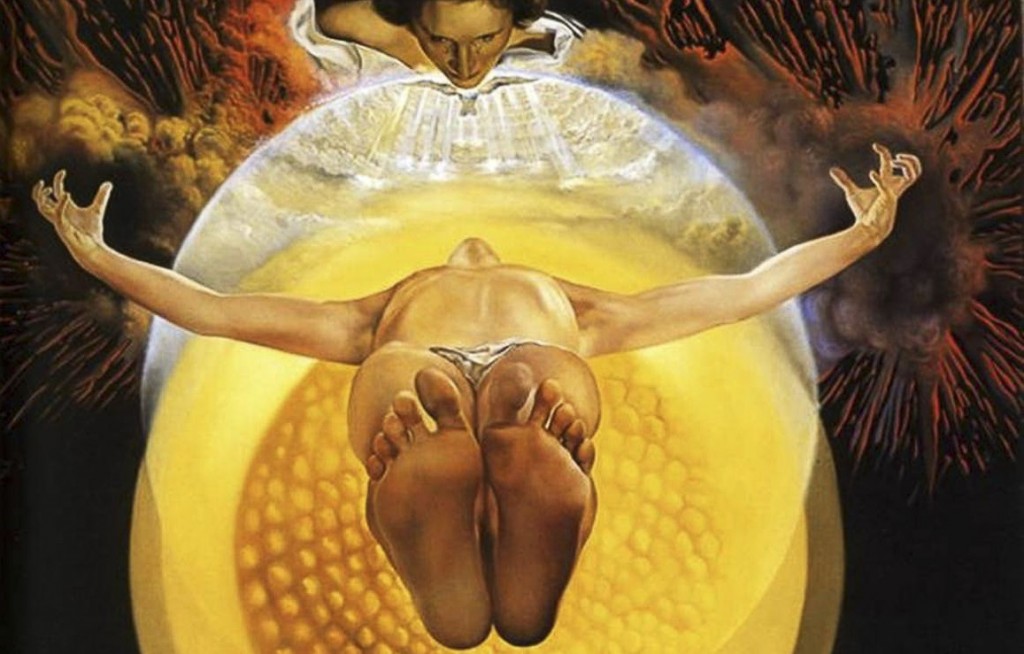
The reactions to yesterday’s intentionally provocative post on the centrality of the resurrection of the body were expected. Those who got the joke didn’t say too much. Those that didn’t get it were adamant about scoring points. The latter group was conspicuous for its inability to stretch their thinking beyond making obvious doctrinal affirmations–as if those are immediately self-explanatory.
If I may pull back the curtain on yesterday’s post, I’d like to tell you what that parable was all about. The main point I wanted to make in my theological/philosophical fragment indirectly was about homonyms. In my earlier post about Oliver Davies’ Theology of Transformation: Faith, Freedom, and the Christian Act I quoted the following in a larger chunk of text:
[After the first scientific revolution], matter was the domain of determinism and so a lack of freedom, while our subjectivity as mind was the privileged place of our freedom. We were free of the world by being in the deterministic world as self-aware subject who could exercise power over the world and its materiality through technology. According to this model, materiality as the field of determinism was either left behind by our spirit–through transcendence–or to be overcome by our spirit–through technology–in order that we (who are most properly spirit) should be free. Here there is a separation between who I am as spirit (or mind) and who I am as matter (or body).

For the most part, we moderns think of the soul as being synonymous with the spirit/mind and separated from the body. This is a homonym (same word denoting different realities) of what Christian theology affirms in the general resurrection of the body, rather than the vague spiritualism implied in the liberation of the soul/mind/spirit from matter. In other words, Christianity doesn’t get you off the hook for your dirty feet by mystically melting them away in the hereafter–even if you might possibly be, in a way, free of them between the particular and general judgments.
I recently finished reading Jonathan Lear’s Radical Hope: Ethics in the Face of Cultural Devastation. This tightly packed little book poses the problem of what to do when the frames that informed the intellectual scaffolding of your worldview collapse like a box of matches. There is an interesting analogy between what Lear says, which I would like to pick up in more detail soon, and the lines of the argument that Oliver Davies makes.
The Davies book revolves around the problem of interpreting the Ascension of Our Lord, or what we affirm in the Creed when we say, “He ascended into heaven and is seated at the right hand of the Father” after the collapse of a pre-modern worldview.
What surprised me, although any reader of Dante’s Paradiso (granted, few get beyond Purgatorio) will be buffered a bit from the initial shock, is how literally Christians took this theological affirmation. They did so because it accorded with their metaphysical picturing of the world based upon the best quasi-scientific cosmology available to them:
Scriptural Christology presupposed the background of this ancient cosmology [the three-tiered cosmos]. Against such a setting it was possible for the Church to affirm the saving work of God in Jesus Christ through his resurrection and glorification within the created order. We often fail to understand today the extent to which heaven itself was understood to be within the created order [my emphasis] and to be intrinsically part of it. Heaven, like earth, was created (Gen 1.2) but it was also the very farthest limit of the material order, where space and time were closest to the presence of the Creator and so most directly shaped by his power. It was the point of intersection between what was visible and what was invisible. Heaven was far ‘above’ the earth in terms of its sublimity, but it was also far above the earth in terms of its physical location. It is this spatio-temporal dimension of the pre-modern heaven which set it decisively apart from anything we can imagine today. The medieval maps which showed heaven as a final ring surrounding the earth at a distance from it were accurate pictorial representations of how the pre-modern world understood the universe to be, with heaven as its ‘crown.’ Just how fundamental and unquestioned this was can be seen in the section of the Summa Theologiae of Thomas Aquinas where Thomas asks the question of where exactly the body of Christ now is? He understands that body to be at the very highest point of heaven ‘by place and dignity.’
There is nothing to be embarrassed by here even if the vast majority of us have trouble affirming that Christ is sitting at the top of the universe feet down pointing at us. Where would the top of the universe be anyway given our present state of knowledge?
The problem that Davies poses is how to affirm the Ascension of Our Lord after the collapse of the medieval cosmos without falling into the subjectivism of Bultmann in Jesus Christ and Mythology. He’s still working out his argument, so that’s yet another thing I’ll have to return to later… Suffice it to say that Davies is attempting to break out of the prison imposed upon theology by the turn to the subject and aims to show how theology can regain the cosmic mystery of Christ (and put some flesh on the soul) that permeated the writings of Aquinas and Maximus without relying upon their now outdated cosmology.
It’s an exciting project for me, because the Ascension and the right-side sitting has always stumped me; it is beyond my powers to imagine what that might mean in the world we now inhabit.
It might be meaningless for you to think of Jesus as sitting on high on top of the universe, but this might still take you higher for a few minutes:

